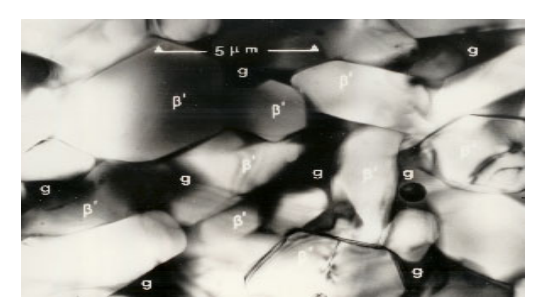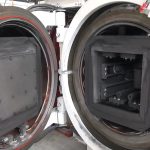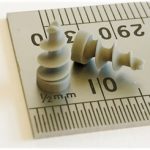Sintering is a process by which a powder compact, or ‘green-body’, is transformed into a dense ceramic article which offers the desired characteristics and material properties. The process can enhance the materials mechanical and high-temperature properties, as well as the electrical conductivity, translucency, or thermal conductivity.
Effectively, sintering is the removal of pores between the powder particles, which is possible when heat energy is applied to the compact.

When a compact is sintered, it is heated to below its melting point, this is why materials with extremely high melting points are often sintered. At high temperatures, the fine ceramic powders undergo various changes, from grain growth to particle rearrangement before the pores are finally eliminated.
Solid-state sintering is often used for ceramics such as zirconia and alumina, and this process is where the materials are transported by diffusion. Liquid-phase sintering is used for ceramics that are more difficult to densify, such as silicon nitride and silicon carbide. In liquid-phase sintering, small volumes of additives in the composition form a liquid at the sintering temperature, where the primary powder particles rearrange due to capillary forces.
Once the particles have rearranged, at the points of contact between some of the particles start to dissolve in the liquid and are re-precipitated at the neck areas between the particles. The pores are then removed and the ceramic compact reaches the full density.
Advance ceramics generally shrink by 20-25% during sintering, and a good, uniform green density during the forming stage is important for controlled, uniform shrinkage.
There are many different sintering techniques available that are suitable for the specific type of ceramic being sintered. For example, porcelain can be sintered in a relatively simple and low-cost kiln, however, advanced technical non-oxide ceramics usually require very precisely controlled high-temperature sintering in a stabilising atmosphere.
Pressure Sintering SiAlON
Conventionally, silicon nitride or SiAlON ceramics are pressureless sintered using a vacuum furnace. Pressureless sintering is an effective, low-cost form of sintering where a slight partial pressure of nitrogen is applied to the furnace to stabilise the ceramic during sintering at high temperature. This method is typically used to avoid any density variations in the final ceramic.
International Syalons now have the capability to perform high-pressure sintering. This is advantageous when sintering advanced silicon nitride ceramics because at the very high temperatures required to sinter low additive compositions N2 will volatilise unless a high-pressure atmosphere is applied.
High-pressure sintering allows specialised compositions of advanced ceramic using new, exotic materials to be designed and sintered to full density. Properties which can be achieved by modifying the composition include increased flexural strength, thermal conductivity, fracture toughness, wear resistance, and electrical and dielectric properties.
New advanced ceramics are currently under development at International Syalons. Please contact us if you would like any more information about pressure sintering or any of our advanced ceramics.


